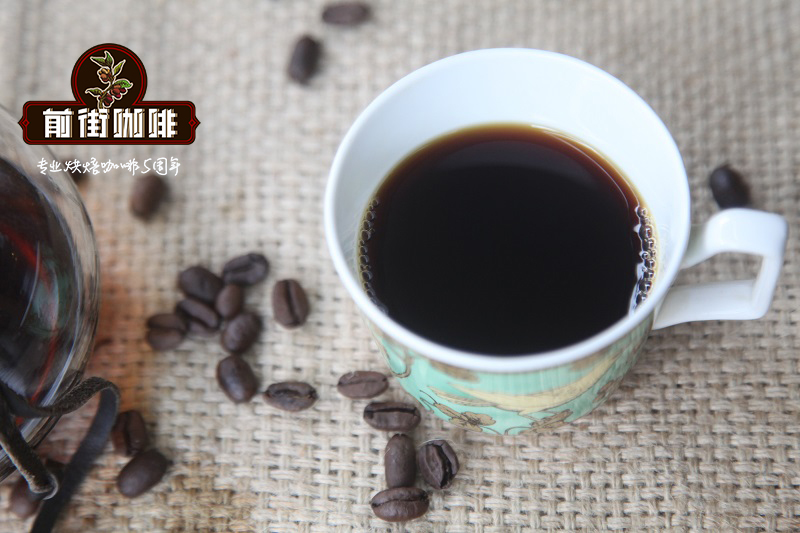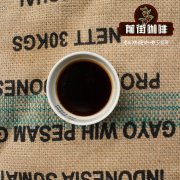What kind of coffee do you have? How much is a cup of Venezuelan coffee?

Professional coffee knowledge exchange more coffee bean information please follow the coffee workshop (Wechat official account cafe_style)
There are four kinds of coffee trees in the world: Arabica, Robustra, Liberica and Arabusta. But there are only two kinds that have real commercial use and have been planted in large quantities. One is Elaraby plus seed, the other is Robasta.
Arabica
Mostly found in tropical Central and South America. Its coffee beans are small in shape, oval in front, narrow and tortuous in the middle, and complete in arc on the back of the beans. Arabica coffee tree growth conditions are relatively harsh, to be planted, the climate is also very limited, can not be too humid, but to have plenty of rainfall, the temperature should be moderate but not very hot. It needs to be planted on a fertile hillside with good drainage at an altitude of 1000 to 2000 meters, so harvesting must be done manually, which is more difficult. However, due to the special aroma, rich flavor and less caffeine of Arabica coffee beans, it is not easy to grow, but in fact it accounts for 70% of the total coffee planted.
The Caribbean Islands have always been the trading hub between South America and the Old World (Europe). Merchants, missionaries and slaves brought coffee all the way from Europe to Venezuela, including Jos è Gumilla, the author of "El Orinoco Ilustrado" (The Orinoco Ilustrated), which chronicles the story of a group of missionaries who introduced coffee to Venezuela. Shortly after coffee seeds occupied Guayana (currently Bolivar Estate) in western Venezuela, coffee began to enter Colombian territory through these missionaries in 1730.
At that time, Venezuela's economy followed European demand-and was an European aristocrat, so its domestic production was dominated by tobacco, sugar and cocoa. At that time, most of Venezuela's economy and trade was run by a company called Guipozcoana, on the grounds that Spanish authoritarianism (1730-1785) touted a business-oriented society. In order to restrict the import of contraband made in the Netherlands, the rules are becoming more and more strict. in order to strengthen the deterrent effect and attack those who dare to avoid taxes, the government has even arranged fortresses of armed ships and strategic agencies on major cargo channels to restrict improper trading of .
Guipozcoana reached its first major coffee business in 1774, setting an important milestone in legally transporting coffee from Lake Maracaibo (located in the coastal area of northwestern Venezuela; the largest lake and lagoon in South America) to Spain. The Venezuelan writer Mario Brice ñ o Iragory has put forward a very interesting analysis and opinion on the role and influence of coffee and cocoa beans in Venezuelan culture. He described cocoa beans as a symbol of European domination of the original works in America, while the emergence of coffee beans has become a bargaining chip for a new generation of hybrids to fight for status in society, gradually bringing society out of dictatorship and into a new generation.
In the new generation, coffee has spread all over the country, including Lara, Portuguesa, T á chira, M é rida, Trujillo, Monagas, Sucre, Yaracuy and so on. After a while, however, the nation's attention turned to oil. Between 1929 and 1938, when the United States experienced the Great Recession, the sharp fall in the dollar made coffee exported in dollars too high. While demand for coffee fell, the military government began to explore for oil when it realized the value of oil, and agriculture was quickly forgotten. Farmers and young people have moved out of the countryside, hoping to go to the cities to participate in the oil generation. It is believed that the growth rate of urban population at that time was so exaggerated that no urban planning could cope with it.
In 1777, the spread of coffee in Venezuela increased rapidly, and small coffee plantations began to exist in M è rida and Trujillo and T à chira. Around 1784, the first largest plantation was unveiled in Chacao, a small town near the provincial capital Caracas. At that time, the economic development of Venezuela was unstable. The process of striving for independence after the Declaration of 1810 and the establishment of Big Colombia in 1821 (composed of Colombia, Venezuela, Ecuador and Panama), all kinds of things happened one after another. Until the dawn of peace in the region, coffee began to be favored by farmers and politicians. However, despite the quiet days at home, it is not immune to international crises. 1836, 1840, 1857, 1882 and 1890 are all years of trade disasters, bank failures and conflicts in the interior of Europe. The international price of coffee has naturally declined. Venezuela relies on both Europe and a single export, falling from the third largest coffee exporter in the world to eighth place.
The economies of Colombia and Venezuela are very similar, but by comparison, Colombia's economy is more diversified, and apart from the development of coffee, it has been investing in the cultivation and manufacturing of other crops. Venezuela, on the other hand, is focused on oil, especially under President Marco Perez Jimenez, whose revenues are invested in the government's public facilities, health care, education system and even agricultural modernization. Marco Perez Jimenez is a very famous international political figure, and he was even reported by Time Magazine in 1955.
Later, after the GOMEZ, the country began to experience democratic reforms, whether in foreign relations or oil issues, the attitude is not as good as it used to be. However, the attention of coffee is still low, and many politicians use coffee political tactics and campaign tactics from time to time in order to get the support of farmers.
For a long time, farmers have been full of unspeakable respect for their crops, even when they cut off the old farming to restore the nutrient value of the soil. The more common varieties of coffee beans are Caturra, Catuai and Bourbaun, and Canephora can also be found in warm areas. However, contrary to one's wishes, the emergence of Roya caused farmers across the country to lose their crops. As a result, major organizations, including INIA (Instituto Nacional de Investigaciones Agricolas) and ULA (Universidad de Los Andes), began to study coffee varieties, and the varieties INIA-01 and Araguaney were widely welcomed by farmers.
The relationship between coffee and politics cannot be taken lightly. In 2009, the government self-righteously chose to import beans from Brazil and Nicaragua for cost reasons, instead of supporting local agriculture. The competitiveness of farmers has been weakened again and again.
Coffee is sometimes a panacea for economies in developing countries, and local farmers and politicians are expected to understand this while not forgetting the risks of relying on one-way development. After all, Venezuela has always had this tendency in history, and lessons should have been learned from cocoa to coffee to oil. Venezuela is rarely a country with everything, with both natural resources and cultural conditions. Bearing in mind the problem of relying on a single economy-inflationary pressures, countries need to re-examine the value of farmers and coffee.
Venezuela's coffee production is not high, most of it is supplied to domestic consumption. Although geographically, Venezuela is mainly produced in the west near Colombia, but its sour taste is very weak, which is not like Colombian beans, but as sweet and deep as Caribbean beans.
Qianjie coffee is recommended to be brewed in 89-90 degrees water to highlight the sweetness of Venezuelan coffee.
Qianjie coffee: Guangzhou bakery, the store is small but a variety of beans, you can find a variety of unknown beans, but also provide online store services. Https://shop104210103.taobao.com
Important Notice :
前街咖啡 FrontStreet Coffee has moved to new addredd:
FrontStreet Coffee Address: 315,Donghua East Road,GuangZhou
Tel:020 38364473
- Prev

Recommendation of Organic Coffee beans in Bolivia Boutique Manor in Bolivia _ how to bake Bolivian coffee beans
Professional coffee knowledge exchange more coffee bean information please follow the coffee workshop (Wechat official account cafe_style) boutique coffee is described in the Bolivian coffee; located in the southeast of Peru, Bolivia is an alpine country. La Paz (capital) is 3660 meters above sea level. Coffee cannot be grown in such a cold place. But the YUNGAS and Amazon basins northeast of La Paz
- Next

Venezuelan coffee production how to drink Venezuelan coffee? What are the characteristics of Venezuelan coffee?
Professional coffee knowledge exchange more coffee bean information please follow Coffee Workshop (Wechat official account cafe_style) Arabica species originated in Ethiopia's Abyssinia Plateau, and then transplanted to Yemen. At that time, coffee grown in Arabica was the secret medicine of Islam, and the government strictly prohibited its planting or spreading its breeding technology to other countries. But then the seedlings planted by Elaraby were covered
Related
- Detailed explanation of Jadeite planting Land in Panamanian Jadeite Manor introduction to the grading system of Jadeite competitive bidding, Red bid, Green bid and Rose Summer
- Story of Coffee planting in Brenka region of Costa Rica Stonehenge Manor anaerobic heavy honey treatment of flavor mouth
- What's on the barrel of Blue Mountain Coffee beans?
- Can American coffee also pull flowers? How to use hot American style to pull out a good-looking pattern?
- Can you make a cold extract with coffee beans? What is the right proportion for cold-extracted coffee formula?
- Indonesian PWN Gold Mandrine Coffee Origin Features Flavor How to Chong? Mandolin coffee is American.
- A brief introduction to the flavor characteristics of Brazilian yellow bourbon coffee beans
- What is the effect of different water quality on the flavor of cold-extracted coffee? What kind of water is best for brewing coffee?
- Why do you think of Rose Summer whenever you mention Panamanian coffee?
- Introduction to the characteristics of authentic blue mountain coffee bean producing areas? What is the CIB Coffee Authority in Jamaica?

